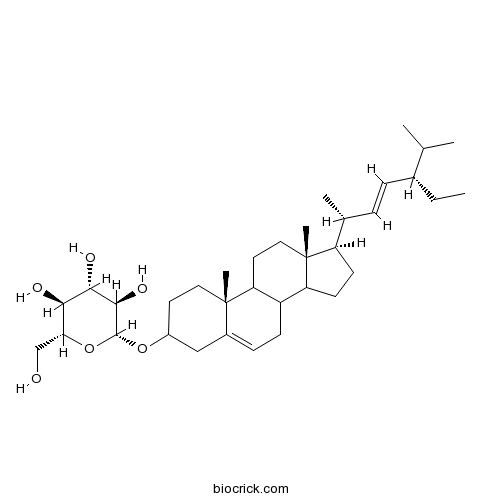Musella lasiocarpa
Musella lasiocarpa
1. The products in our compound library are selected from thousands of unique natural products; 2. It has the characteristics of diverse structure, diverse sources and wide coverage of activities; 3. Provide information on the activity of products from major journals, patents and research reports around the world, providing theoretical direction and research basis for further research and screening; 4. Free combination according to the type, source, target and disease of natural product; 5. The compound powder is placed in a covered tube and then discharged into a 10 x 10 cryostat; 6. Transport in ice pack or dry ice pack. Please store it at -20 °C as soon as possible after receiving the product, and use it as soon as possible after opening.
Natural products/compounds from Musella lasiocarpa
- Cat.No. Product Name CAS Number COA
-
BCN4865
Stigmasterol glucoside19716-26-8
Instructions

Thirty-four Musa (Musaceae) expressed sequence tag-derived microsatellite markers transferred to Musella lasiocarpa.[Pubmed: 22911593]
We assembled 31,308 publicly available Musa EST sequences into 21,129 unigenes; 4944 of them contained 5416 SSR motifs. In all, 238 unigenes flanking SSRs were randomly selected for primer design and then tested for amplification in Musella lasiocarpa. Seventy-eight primer pairs were found to be transferable to this species, and 49 displayed polymorphism. A set of 34 polymorphic SSR markers was analyzed in 24 individuals from four wild M. lasiocarpa populations. The mean number of alleles per locus was 3.0, ranging from 2 to 7. The observed and expected heterozygosities per marker ranged from 0.087 to 0.875 (mean 0.503) and from 0.294 to 0.788 (mean 0.544), respectively. These markers will be of practical use for genetic diversity and quantitative trait loci analysis of M. lasiocarpa.
Examination of the cytoplasmic DNA in male reproductive cells to determine the potential for cytoplasmic inheritance in 295 angiosperm species.[Pubmed: 14519776]
Mature pollen grains of 295 angiosperm species were screened by epifluorescence microscopy for a marker that denotes the mode of cytoplasmic inheritance. We used the DNA fluorochrome DAPI (4',6-diamidino-2-phenylindole) for pollen cell staining. The presence or absence of fluorescence of cytoplasmic DNA in the generative cell or sperm cells was examined in each species. The species examined represented 254 genera and 98 families, and 40 of these families had not been previously studied in this regard. The cytoplasmic DNA of the generative cell or sperm cells did not fluoresce in 81% of the species examined, from 83% of the genera and 87% of the families examined, indicating the potential for maternal cytoplasmic inheritance in these species. In contrast, the male reproductive cells of 19% of the species, from 17% of the genera and 26% of the families examined, displayed fluorescence of the cytoplasmic DNA, indicating the potential for biparental cytoplasmic inheritance in these species. The results revealed the potential for biparental cytoplasmic inheritance in several species in which the inheritance mode was previously unknown, including plants in the Bignoniaceae, Cornaceae, Cruciferae (Brassicaceae), Cyperaceae, Dipsacaceae, Hydrocharitaceae, Papaveraceae, Portulacaceae, Tiliaceae, Valerianaceae, and Zingiberaceae. Electron microscopy revealed that the sperm cells of Portulaca grandiflora contain both plastid and mitochondrial DNA. However, in the generative cells of Musella lasiocarpa, the mitochondria contain DNA, but the plastids do not. These data provide a foundation for further studies of cytoplasmic inheritance in angiosperms.


